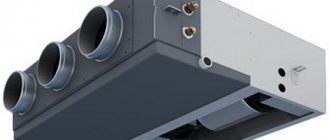The consumption of consumed resources is subject to accounting, and this can only be done with the help of special meters. Therefore, today the installation of metering devices is a mandatory procedure for every property owner.
Back in 2015, a law was passed obliging the owner of the premises to install hot, cold water and heat meters. The need to install a gas meter in the apartment is also stated in this document.
But is this metering device really necessary and what will happen if it is not installed?
New legislation
New edition of Federal Law Art. 466, which came into force on January 1, 2015, states that the installation of a gas meter when used exclusively for domestic needs has been transferred from the “mandatory” status to the “optional” status.
Although earlier in the law on energy conservation, issued in 2009, it was stated that every consumer must install a gas meter. And there was even a deadline by which all gas consumers had to install a meter. But time passed, the deadline was pushed back, and the owners were still in no hurry to acquire gas meters.
The biggest difficulty, which became the main reason for refusing the mandatory installation of a meter, is that the consumer incurs too much expense when installing the equipment . The equipment itself plus installation work costs a hefty sum, which sometimes reaches fifteen to twenty thousand rubles, which is not small things at all.
The benefits from the introduction of gas meters were seen only by companies providing meter installation services. Actually, it was from them that the main heat of passions came; they actively called for the installation of gas meters, frightening people with serious fines for the lack of a gas meter.
In the end, the legislators took into account the excitement that was caused among the population and canceled the previously introduced obligation. But the cancellation affected only those consumers who owned a dilapidated, unsafe or subject to demolition property as of January 1, 2013.
Consumers who use less than two cubic meters of gas per hour are also not required to install meters; in fact, owners of household gas stoves fall under this paragraph.
And yet, is it necessary to install a gas meter in an apartment? If a heating device, stove, or water heater in a house runs on gas, then the gas consumption exceeds the established threshold of two cubic meters of gas. This means there must be a counter.
Is it possible to install a gas meter yourself?
Despite the apparent simplicity of installing a gas meter in an apartment, working with gas is very dangerous, and only representatives of the gas service who have permission to do this type of work can do it.
Improper installation of gas equipment can become a source of many problems not only for the apartment owner, but also for the entire building. Therefore, the restriction on self-installation of gas is justified.
Even if a professional installed the meter, this work will be illegal without contacting Gorgaz. Therefore, you cannot do without a visit to the gas service. A meter installed without their knowledge will be considered unauthorized.
What is the benefit of the meter to consumers?
First of all, the benefit is that the consumer pays only for the volume of gas that he directly consumed . In this case, there are no longer any questions about why this or that amount was “dripped”.
The resource supplying organization is also interested in installing a meter, since many more people live in apartments in multi-apartment buildings than are registered.
So it turns out that according to the receipt, one person is registered in the apartment, but in fact there are five living there. This means that the amount of gas consumed is significantly higher than the designated norm per person.
Having a meter will no longer allow you to bypass the supplier, and the consumer will be forced to pay back exactly the amount for which he spent gas.
Economic expediency
Depending on where a person lives - in a house with gas heating or an apartment with one tile - the average volume of gas consumption is calculated.
Thus, a family of four living in an apartment equipped with a gas stove based on the average consumption of approximately 4-5 cubic meters of gas per person will pay about 100 rubles per month. If there is no meter, the family will pay the established tariff of 61.6 rubles per person - 246.6 rubles.
Taking into account that the house has a water heating device, the tariff per person will be even higher - 173.6 per person. You will have to pay almost 700 rubles for a month. If there is a meter, the receipt will show exactly the amount for which the user will receive gas.
To fully determine the economic benefit, you need to calculate how much a gas meter for an apartment and its installation costs . For 2022, sellers offer a fairly wide range of metering devices. Their price varies between 2.5-5 thousand rubles.
Plus, installation of the device. It all depends on the model of the device. On average, this service costs about 6,000 rubles. As a result, you will have to pay up to 11,000 rubles for everything.
Yes, looking at this amount, the consumer is in no hurry to fork out money and does not queue at the counters . But if you do some small calculations, the savings are quite noticeable. Installing a meter, even according to the most conservative estimates, will pay for itself in a maximum of two to three years.
How to choose the right meter
If you nevertheless come to the conclusion that you need a gas meter, do not be lazy to spend a little time studying the proposed models.
You need to buy a meter only from specialized companies, and only if you have a quality certificate for the meter. Feel free to ask for certificates and passports.
If the seller does not want to provide you with the requested papers for some reason, do not hesitate to leave this store. He definitely won’t offer you anything of high quality.
Before purchasing a device, every owner thinks about which gas meter is best to install in an apartment and what should you pay attention to first? Metering devices can be rotary or membrane, the first option is a little more budget-friendly, but membrane meters are more reliable, they do not allow gas to pass through . Therefore, saving in this case is inappropriate; we take membrane ones. In addition, they keep more accurate records of resource consumption.
Last but not least, what kind of gas appliances you have is also important. If you have only a stove, then you will need one type of device; if you also have a column installed, then you will need a completely different device. It is also important to take into account the direction of gas flow: from left to right or vice versa.
To take into account all the nuances, before purchasing a metering device, take the time to consult with specialists.
Not the last criterion is the throughput of the meter, the amount of gas that it can pass per hour. These parameters are necessarily specified in the characteristics of the device. The higher the throughput, the more expensive the device is. Therefore, you need to clearly understand what bandwidth is required in your case.
If you have a stove with four burners, then in one hour you need 1.56 cubic meters. If in addition to it you also have a gas water heater, keep in mind that it takes 2.5 cubic meters of gas per hour. If you have both devices, add up the numbers.
Additional markings on the device also help determine its purpose:
- G1.6 indicates that the device passes 1.6-2.5 cubic meters of gas per hour;
- G2.5 – the device passes 2.5-4 cubic meters of gas per hour;
- G4 – capacity from 4 to 6 cubic meters.
There are also more powerful devices with a throughput of 10 to 16, and from 16 and higher.
When choosing a device, consider a number of parameters:
- ambient temperature, if you plan to install the meter outside, then choose a temperature-compensation device, it is not afraid of frost and will easily withstand bad weather;
- the number of people living in this apartment;
- distance between the centers of the controller outputs;
- diameter of the thread provided at the gasometer outlets.
Do not forget to consult with specialists before purchasing a device.
Gas meters with thermal corrector for private homes
For a private home, a gas metering device with a thermal corrector is optimal. This is explained by the fact that, as a rule, the gas meter is located on the street. In this case, the thermal corrector allows you to reduce the influence of changes in ambient temperature on the device readings.
Before purchasing a gas meter, you should evaluate the selected device according to the following criteria:
- Total possible volume of gas consumption;
- Does the device have a thermal corrector?
- Location of the gas meter (outdoor or indoor);
- Recommended calibration interval for the device;
- Dimensional size;
- Noise level during operation of the device;
- Degree of reliability;
- Product cost.
Special attention is given to the fact that when using autonomous heating in a house, it would be optimal to install a volumetric or rotary metering device. And if only a kitchen stove or water heater runs on gas, then installing a rotary or electronic gas meter will be sufficient.
Features of installing a metering device
The high cost of the meter and installation procedure is not the only disadvantage that gas consumers face. Before installing the meter, you will have to do a fair amount of running around the corridors of various authorities. So, how to install a gas meter in an apartment?
A gas meter belongs to the category of dangerous devices, therefore the approach to installing this device must be special.
Choosing a company
The specialist must have the appropriate certification . This is determined by Government decree. Therefore, before signing an agreement to receive services, make sure that you are dealing with certified specialists.
Check to see if they have permission to carry out work related to gas networks. Find out the experience in this area, be sure to ask about the guarantees that the installer company provides.
Here you cannot be guided only by the cost of the service provided; go to experienced specialists.
Is it possible to install a gas meter in an apartment yourself? Definitely not . As already mentioned, installation regulations require that this work be performed only by a qualified worker.
Submitting an application for installation
Now you will have to visit your gas supplier; the telephone number and address of the company must be written down on the receipt - this is in case you do not know where your service provider is located. At the company office you need to write an application for installation of a metering device.
What documents are needed for this? Be sure to take with you your passport, a document confirming your right to this premises and a paid receipt for the gas provided. Just in case, it is better to take care of additional copies of all these papers.
Gas meter installation
We contact the selected installation company again, this time the technician must come to the site in order to determine the technical capabilities of the installation.
Now it’s time to start purchasing the necessary components and the meter itself. You can purchase the components and the meter itself, or entrust this process to a specialist.
We go to the gas service again, we need to agree on the day and time when the installation work will be carried out . If required, we will make partial payment for the work.
Choosing a location for the device
The location for the meter must meet the requirements of SNiP, which clearly states where exactly the meter should be located . First of all, the emphasis is on safety, convenience is a secondary factor.
Most often, the device is placed in the same room where there is a stove and other gas-powered appliances. But installation of the meter in an adjacent room is also allowed. It is also possible to install the gas meter outside the building, but in this case it is necessary to protect the device from natural phenomena.
Installation of the device
On a predetermined day, specialists will come to install the metering device, and it is they who will carry out all the installation work.
How does commissioning take place?
After installation, gas service employees check whether the work was carried out efficiently. At this stage, it is important to make sure that there is no interference with the passage of fuel through the mechanism of the device and the operability of the device. When checking, be sure to check the unit for leaks.
Only after all these procedures, a certificate of completion of work is issued, which indicates the place and date of installation, the serial number of the gas meter, and the name of the specialist performing the installation. The controller also records the gas meter readings at the time of installation of the device, indicates the time for the next meter verification and the smoothness of the meter's star mechanism.
The act is drawn up in two copies, one of which remains with the customer, the second is transferred to the gas service.
The client, in turn, signs an acceptance certificate for the work performed. The installation specialist fills out the device commissioning certificate and draws up an agreement for further maintenance of the metering device.
The procedure for installing a meter is a multi-stage process, not the most convenient scheme for the working population. Therefore, experts assure that the population’s refusal to install meters is most often caused by the multi-stage installation procedure.
Flow meter installation rules
There are a number of standards that must be observed to ensure proper installation of gas IPU:
- Accurate selection of the meter itself. The device must be certified and have State verification seals. Damage and lack of supporting documents are not allowed. It is taken into account that the verification period is calculated from the date indicated in the product passport.
- Coordination of installation location. It is recommended to invite a specialist from the gas supply company. The location site must meet the requirements of RF PP No. 549 of July 21, 2008 and RF PP No. 354.
- The installation distance is maintained. The height from the floor should be more than 1.2 cm, the distance from the slab should be at least 40–80 cm. There should be a gap of 5–6 cm from the wall surface.
According to the standards, the minimum distance from the meter to the device consuming gas (furnace, dispenser, boiler) is 800 mm, but in some cases it is allowed to install the IPU no closer than 400 mm
- Compliance with fire safety standards. Experts turn off the gas supply.
- When installing outdoors, it is necessary to ensure the safety of the flow meter, so the metering device is placed in a protective box.
- Any changes to the gas pipeline system must be coordinated and approved by the relevant project.
If the rules are not followed, restoration and putting the system in order is paid by the owner of the premises.
Who is responsible for the operation of metering devices?
The demand for the metering device is only from the owner of the premises, which is why it is so important to be particularly scrupulous in choosing an installer company, and after the installation is completed, make sure that all work is done efficiently.
To protect yourself from unpleasant surprises, it is advisable to enter into an agreement with specialists for periodic inspection of devices. Such work can be carried out by both the installer and the resource supplier.
If, during the next inspection, problems are identified with the device, the meter must be removed for repair work . Most often, such work is carried out by the manufacturer of the device. After eliminating the malfunction, the device is put back in place.
If it is discovered that the device has become unusable due to the fault of the user, he will have to pay a fine for improper handling of the meter.
Who pays for the gas meter installation?
The owner of the premises pays for this procedure, although today legislators are trying to shift this responsibility to resource supply organizations.
The logic is simple: those who are interested in this innovation should pay for the process. But for now the consumer pays for this service.
Although there are still certain categories of citizens who can qualify for free installation of the device.
For this purpose, a corresponding program is in place:
- Disabled people of the first and second groups;
- Low-income citizens;
- Veterans of the Great Patriotic War, persons equated to the category of war participants, home front workers, prisoners;
- Large families;
- Families raising a disabled child.
All these categories of citizens can count on free installation of metering devices. In some regions, it is stated at the legislative level that pensioners can count on free installation.
What documents are needed
Before installing a meter, you need to conclude an agreement with the city gas service.
Documents for installing a gas meter:
- Passport of the owner of the premises;
- Certificate of ownership;
- Passport for the meter;
- Passports for gas appliances;
- Plan of the gasified premises.
After collecting the documents, you need to contact Gorgaz, fill out an application for concluding an agreement there and hand it over to the employee along with all the documents. Your application will be registered and you will be contacted within 5 working days to confirm the date of the work.











